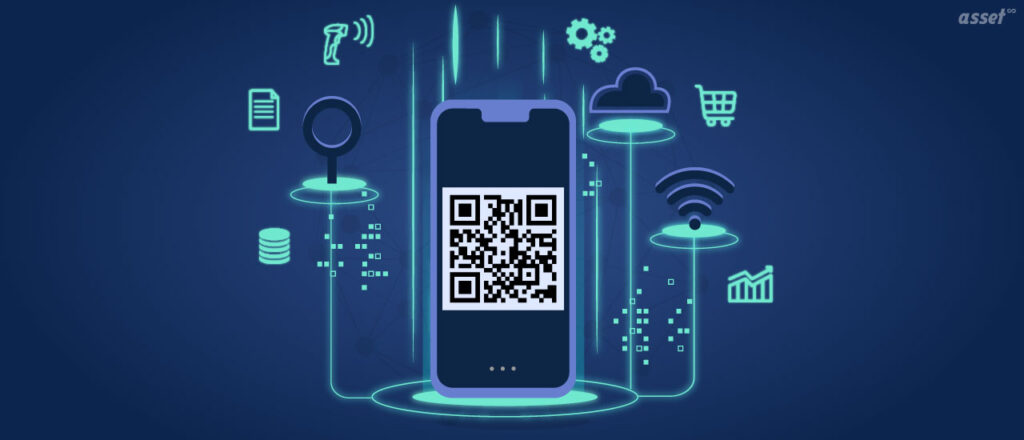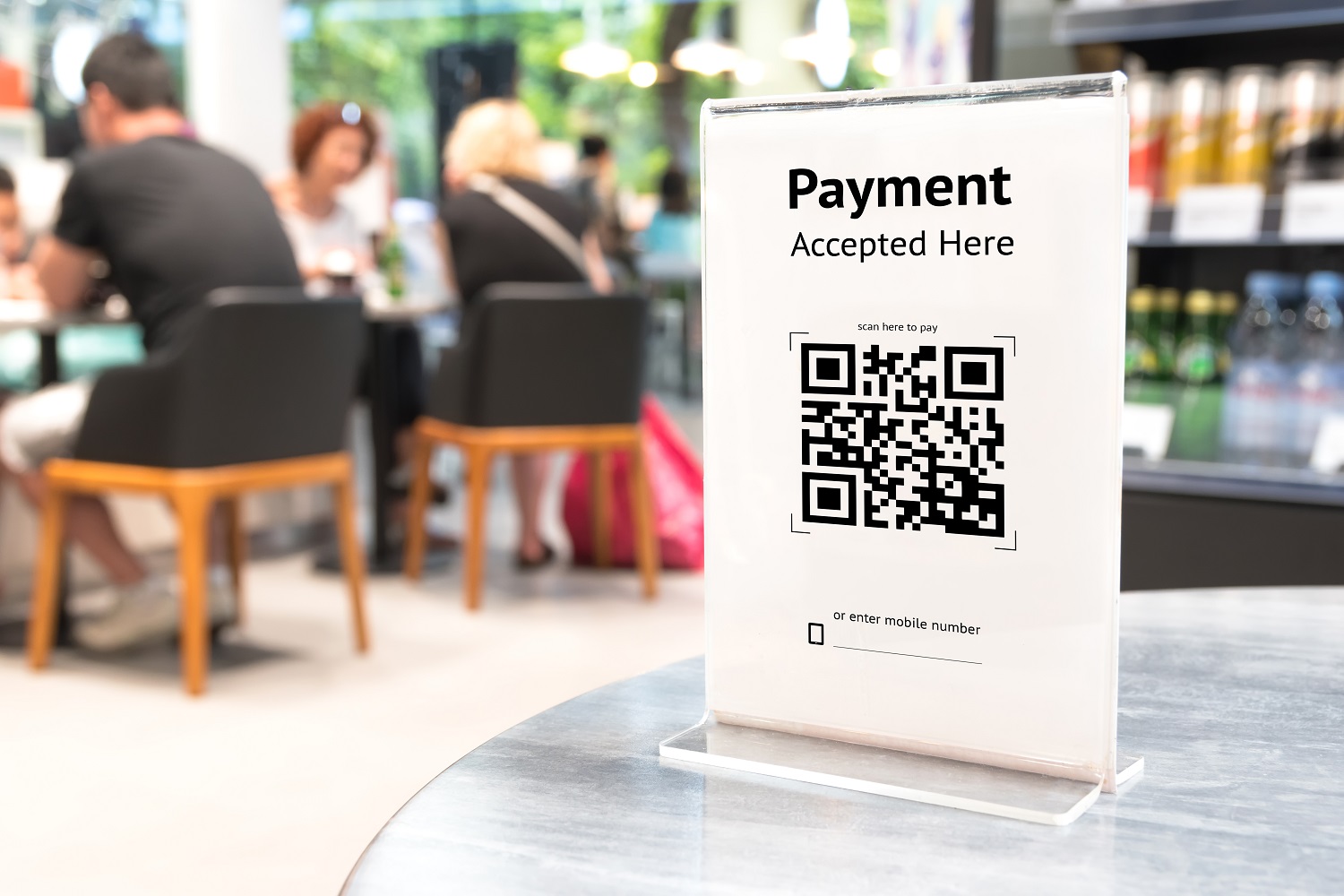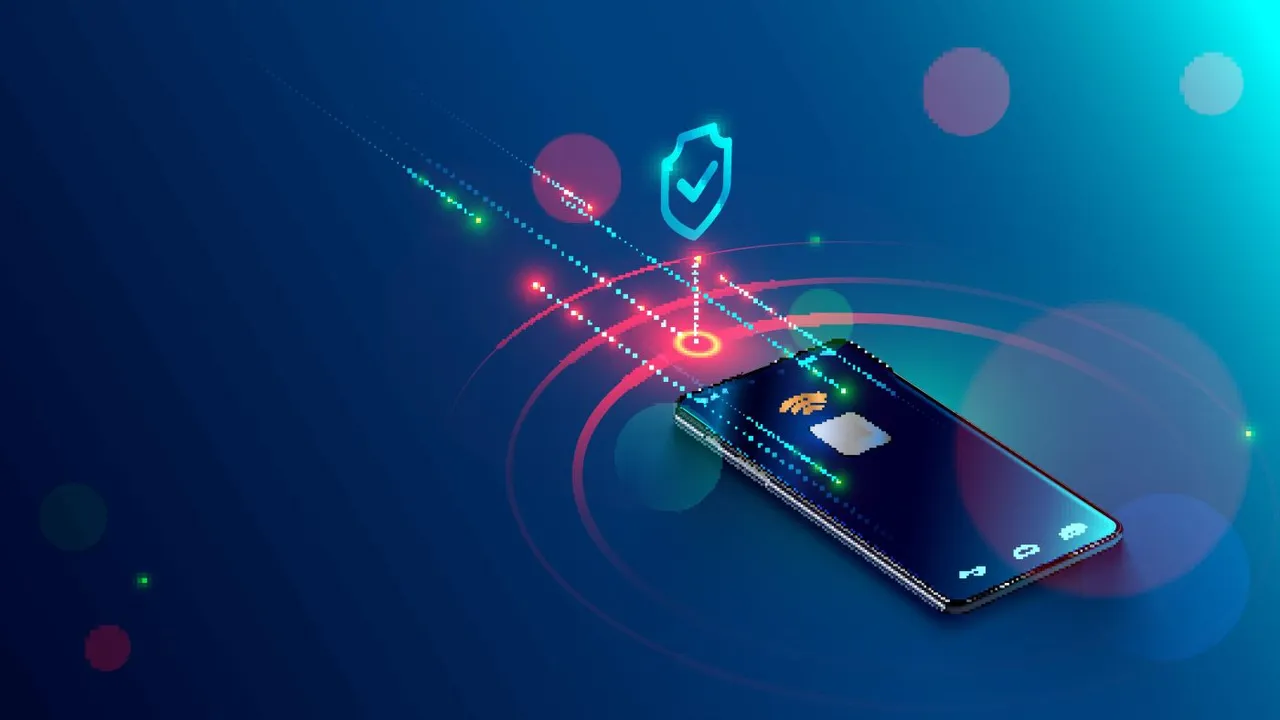How Businesses Can Master the $3 Trillion Contactless Future
Six months ago, I watched a small café owner in Singapore process more transactions in an hour using QR codes than his traditional payment terminal had handled all morning. The speed was remarkable; customers simply scanned, paid, and walked away with their coffee, no fumbling for cards or cash. But what struck me wasn’t just the efficiency; it was the owner’s expression of pure relief. He’d finally found a payment solution that worked seamlessly with his business flow, reduced costs, and actually improved customer satisfaction.
That moment crystallized something I’ve been observing through iMali’s research across hundreds of businesses: we’re not just witnessing the adoption of another payment method. We’re experiencing the emergence of a fundamental shift in how commerce operates, one that’s reshaping everything from customer expectations to business economics. The numbers tell a staggering story: QR code payments reached $3 trillion globally in 2025, representing growth that most industries can only dream of achieving.
Yet beneath the impressive statistics lies a more complex reality. While some businesses thrive with QR payments, others struggle with implementation challenges, security concerns, and customer adoption barriers that can make or break their contactless payment initiatives. Through extensive research and real-world analysis, iMali has identified the critical factors that separate QR payment success stories from costly failures, insights that every business leader needs to understand as contactless payments become not just an option, but a necessity for competitive survival.
This isn’t another article celebrating QR code convenience. This is an investigation into how smart businesses are leveraging QR payments to transform their operations, the hidden challenges they’re overcoming, and the strategic approaches that determine success in the contactless economy.
The Unstoppable Rise: Understanding the QR code Payments Phenomenon
The explosion of QR code payments represents more than technological adoption; it reflects a fundamental evolution in how people interact with money and commerce. What began as a convenient alternative during the pandemic has transformed into the preferred payment method for entire generations of consumers who now consider traditional payment processes unnecessarily complex and time-consuming.
The scale of this transformation defies most predictions. Asia-Pacific continues dominating global QR payment volume, accounting for over 60% of the $3 trillion processed in 2025, but the real story lies in the rapid adoption across previously resistant markets. The United States, long considered a contactless payment laggard, processed over $500 billion in QR transactions in 2025, a 23% increase that signals mainstream acceptance among American consumers who historically preferred traditional card payments.
Behind these numbers lies a behavioral shift that businesses must understand to compete effectively. Modern consumers, particularly Generation Z and younger millennials, view payment friction as a form of business incompetence. They expect to complete purchases with minimal effort, maximum speed, and complete security expectations, which QR payments fulfill more effectively than any previous payment technology.
The business implications extend far beyond the convenience of payment processing. Companies implementing QR payments report average sales increases of 15% as the reduced friction encourages impulse purchases and repeat transactions. More significantly, QR payments generate valuable customer data that businesses can leverage for personalization, inventory optimization, and marketing effectiveness, creating competitive advantages that extend well beyond the transaction itself.
However, this rapid adoption has also created new vulnerabilities and challenges that many businesses underestimate. The same simplicity that makes QR payments attractive to consumers also appeals to fraudsters who exploit implementation weaknesses and customer unfamiliarity with security best practices. Understanding both the opportunities and risks of QR payments has become essential for business success in the contactless economy.
The technological infrastructure supporting QR payments continues evolving at a remarkable speed. Dynamic QR codes that update in real-time are projected to boost adoption by 40% in 2025, while artificial intelligence integration is reducing fraud incidents by 15% year-over-year through sophisticated pattern recognition and behavioral analysis. These advances create opportunities for businesses to leverage cutting-edge QR payment technologies while effectively managing implementation complexity
Enterprise vs Small Business: Different Challenges, Different Solutions
The QR payment landscape presents dramatically different opportunities and obstacles depending on business size, complexity, and customer base. Through iMali’s analysis of implementation patterns across various business segments, clear distinctions emerge between enterprise and small business approaches that successful organizations must understand and address appropriately.
Large enterprises face what we term “the integration paradox” when implementing QR payments. Their existing payment infrastructure, often involving multiple processors, complex approval workflows, and extensive compliance requirements, can make QR payment integration more challenging than smaller businesses experience. However, enterprises also possess resources and technical capabilities that enable sophisticated QR payment implementations with advanced features like dynamic pricing, personalized offers, and integrated loyalty programs.
The enterprise advantage becomes apparent in security implementation and fraud prevention. Large organizations typically maintain dedicated IT security teams, comprehensive monitoring systems, and established relationships with payment security vendors that enable robust QR payment protection. They can implement multi-layered authentication systems, real-time fraud detection, and comprehensive audit trails that provide enterprise-grade security for high-volume QR payment processing.
However, enterprise complexity can also create unexpected vulnerabilities. Multiple business units implementing QR payments independently may create inconsistent security standards, conflicting customer experiences, and integration challenges that sophisticated fraudsters exploit. Enterprise QR payment success requires centralized strategy development combined with flexible implementation approaches that accommodate diverse business unit requirements.
Small and medium businesses experience entirely different QR payment dynamics. Their simpler operations enable faster implementation and more direct customer relationships that facilitate QR payment adoption. Small business owners often serve as the primary customer contact, enabling immediate problem resolution and personalized service that enhances QR payment experiences.
The cost advantages for small businesses can be substantial. QR payments eliminate expensive hardware requirements, reduce payment processing fees, and minimize the cash handling overhead that disproportionately impacts smaller operations. Many small businesses report that QR payment adoption enabled them to accept digital payments for the first time, opening new customer segments and increasing transaction volumes significantly.
Yet small businesses also face unique QR payment challenges. Limited IT resources mean they rely heavily on payment provider security measures and technical support, making vendor selection critical for long-term success. They may lack the expertise to evaluate QR payment security features or implement best practices independently, creating vulnerabilities that fraudsters specifically target.
The customer education burden often falls disproportionately on small businesses. While enterprises can invest in comprehensive marketing campaigns to promote QR payment adoption, small businesses must rely on personal interaction and gradual customer conversion. This process requires patience and persistence but often results in higher customer loyalty and satisfaction when executed effectively.
Successful QR payment implementation across both segments requires understanding these fundamental differences and tailoring approaches accordingly. Enterprises benefit from comprehensive planning, centralized strategy development, and sophisticated security implementation, while small businesses succeed through simplicity, personal customer relationships, and gradual adoption strategies that build confidence over time.
Security in the Contactless Era: Protecting Your Business and Customers
The security landscape for QR payments presents a complex mix of enhanced protection and new vulnerabilities that businesses must navigate carefully. While QR payments eliminate some traditional fraud vectors like card skimming and PIN observation, they introduce different risks that require specialized prevention strategies and ongoing vigilance.
The most common QR payment security threat involves fake QR code placement, where fraudsters replace legitimate business codes with their own versions that redirect payments to fraudulent accounts. This attack vector particularly targets small businesses with limited security monitoring capabilities, though sophisticated versions can impact larger organizations through social engineering and insider threats.
Advanced persistent threats in QR payments involve “quishing” attacks where fraudsters create QR codes that appear to link to legitimate payment platforms but actually direct users to sophisticated phishing sites that capture payment credentials and personal information. These attacks have grown by over 400% in 2025 as fraudsters recognize the trust that consumers place in QR code authenticity.
The technical architecture of QR payments creates specific vulnerabilities that traditional payment security measures don’t address. QR codes often link to web-based payment platforms rather than closed payment networks, creating additional attack surfaces through browser vulnerabilities, man-in-the-middle attacks, and malicious website redirection. Businesses must implement comprehensive security monitoring that extends beyond their direct payment processing to include web security and customer device protection.
However, QR payments also offer security advantages that many businesses underutilize. The ability to generate dynamic QR codes enables time-limited payment windows that prevent replay attacks and unauthorized transaction processing. Advanced QR payment systems can incorporate biometric authentication, geolocation verification, and behavioral analysis that provide stronger security than traditional card-present transactions.
The regulatory environment for QR payment security continues evolving, with new standards emerging for encryption requirements, data handling protocols, and fraud prevention measures. The ANSI X.9 QR code encryption standards, implemented by leading payment providers in 2025, establish baseline security requirements that businesses should verify when selecting QR payment solutions.
Effective QR payment security requires layered approaches that address technical, procedural, and human factors. Technical measures include secure QR code generation, encrypted payment processing, and real-time fraud monitoring. Procedural elements involve regular security audits, staff training programs, and incident response protocols. Human factors encompass customer education, security awareness programs, and clear communication about legitimate QR payment processes.
The cost-benefit analysis of QR payment security investments varies significantly based on business risk profile, transaction volumes, and customer demographics. High-volume businesses with tech-savvy customers may justify comprehensive security investments that include advanced authentication and monitoring systems. Smaller businesses often achieve adequate protection through careful vendor selection and basic security best practices combined with strong customer relationships that enable rapid fraud detection and response.
Implementation Strategies: From Planning to Execution
Successful QR payment implementation requires systematic planning that addresses technical requirements, business process changes, and customer adoption strategies simultaneously. The businesses that achieve the best results treat QR payment integration as a comprehensive business transformation rather than a simple technology addition.
The planning phase begins with understanding your specific customer base and transaction patterns. Different customer demographics show varying levels of QR payment comfort and adoption rates. Younger customers typically embrace QR payments immediately, while older demographics may require additional support and gradual introduction strategies. Businesses must design implementation approaches that accommodate these differences while maintaining consistent security and quality standards.
Technical integration complexity varies dramatically based on existing payment infrastructure and business requirements. Simple QR payment implementations can be operational within hours using basic payment provider solutions that generate static QR codes for standard transaction processing. Advanced implementations incorporating dynamic pricing, inventory integration, and customer relationship management may require months of development and testing to ensure reliable operation.
The vendor selection process critically influences long-term QR payment success. Leading payment providers offer comprehensive QR payment platforms that include security features, fraud monitoring, analytics capabilities, and ongoing technical support. However, vendor capabilities vary significantly, and businesses must evaluate options based on their specific requirements rather than generic feature comparisons.
Staff training represents a frequently underestimated implementation requirement. Employees must understand QR payment processes, security best practices, and customer support procedures to ensure smooth operations and positive customer experiences. Training programs should address both technical operation and customer interaction skills, enabling staff to troubleshoot common issues and provide helpful guidance to customers unfamiliar with QR payments.
Customer communication strategies significantly impact QR payment adoption rates. Clear signage, helpful instructions, and patient customer support during the transition period build confidence and encourage repeat usage. Many successful businesses implement gradual rollout approaches that introduce QR payments alongside existing payment methods, allowing customers to adopt the new technology at their own pace.
Testing and validation processes ensure QR payment systems operate reliably under real-world conditions. Comprehensive testing should include transaction processing verification, security feature validation, and customer experience evaluation across different devices and network conditions. Businesses should plan for contingency procedures that maintain operations if QR payment systems experience technical difficulties.
The monitoring and optimization phase continues throughout QR payment operation. Regular analysis of transaction data, customer feedback, and system performance enables continuous improvement and early identification of potential issues. Successful businesses establish metrics for QR payment success and regularly review performance against these benchmarks to guide ongoing optimization efforts.
Change management considerations ensure that QR payment implementation doesn’t disrupt existing business operations or customer relationships. Clear communication about implementation timelines, staff training schedules, and customer support procedures helps maintain business continuity during the transition period.
Customer Experience Revolution: Building Trust in Contactless Transactions

The customer experience dimension of QR payments extends far beyond transaction convenience to encompass trust, security perception, and overall brand interaction. Businesses that understand and optimize these factors achieve significantly higher QR payment adoption rates and customer satisfaction scores than those focusing solely on technical implementation.
Customer psychology around QR payments reveals interesting patterns that businesses can leverage for competitive advantage. The perceived modernity and technological sophistication of QR payments can enhance brand perception, particularly among younger demographics who associate advanced payment options with business innovation and customer-centricity. However, this same perception can create barriers with older customers who may view QR payments as unnecessarily complex or potentially risky.
The onboarding experience critically influences long-term QR payment adoption. Customers’ first interaction with a business’s QR payment system often determines whether they’ll use it again or revert to traditional payment methods. Successful businesses invest in clear instructions, helpful staff guidance, and forgiving error recovery procedures that make initial QR payment experiences positive and confidence-building.
Trust building requires addressing both rational security concerns and emotional comfort factors. Customers need reassurance that QR payments protect their financial information and won’t result in unauthorized charges or privacy violations. However, they also need to feel comfortable with the payment process and confident that they can complete transactions successfully without embarrassment or frustration.
The speed advantage of QR payments becomes most apparent in high-volume environments where traditional payment processing creates bottlenecks and customer frustration. Restaurants, coffee shops, and retail stores report significant improvements in customer throughput and satisfaction when QR payments reduce checkout wait times and eliminate payment processing delays.
Personalization opportunities through QR payments enable enhanced customer experiences that traditional payment methods cannot match. Dynamic QR codes can incorporate customer-specific pricing, loyalty rewards, and personalized offers that make each transaction feel tailored to individual preferences. These capabilities create competitive advantages that extend well beyond payment processing convenience.
Error recovery and customer support procedures require special attention in QR payment systems. When traditional payments fail, customers typically understand the problem and alternative solutions. QR payment failures may be less intuitive, requiring clear error messages, helpful staff guidance, and straightforward resolution procedures that maintain customer confidence in the payment system.
Accessibility considerations ensure that QR payment systems accommodate customers with different technical abilities and device capabilities. Alternative payment options should remain available for customers who cannot or prefer not to use QR payments, while QR payment interfaces should be designed for easy use across different smartphone types and operating systems.
The feedback collection and improvement cycle enables continuous enhancement of QR payment customer experiences. Regular customer surveys, staff observations, and transaction data analysis provide insights into pain points and improvement opportunities that guide ongoing optimization efforts.
Economic Impact and ROI: Measuring QR Payment Success
The financial implications of QR payment adoption extend far beyond obvious cost savings to include revenue enhancement, operational efficiency improvements, and competitive positioning benefits that many businesses initially overlook. Comprehensive ROI analysis requires examining both quantifiable financial impacts and strategic advantages that influence long-term business success.
Direct cost savings from QR payment implementation typically include reduced payment processing fees, eliminated hardware costs, and decreased cash handling overhead. Payment processing fees for QR transactions often cost 0.5-1% less than traditional card payments, creating substantial savings for high-volume businesses. Hardware savings eliminate the need for expensive payment terminals, card readers, and associated maintenance costs that can total thousands of dollars annually for multi-location businesses.
Cash handling cost reductions provide significant but often underestimated benefits. Businesses that reduce cash transactions through QR payment adoption eliminate costs associated with cash counting, bank deposits, theft prevention, and reconciliation procedures. These operational savings can exceed 2-3% of cash transaction volume, making QR payments particularly attractive for businesses with high cash volume.
Revenue enhancement opportunities through QR payments include increased transaction frequency, higher average transaction values, and improved customer retention rates. The reduced friction of QR payments encourages impulse purchases and repeat transactions, with many businesses reporting 10-15% increases in customer purchase frequency after QR payment implementation.
Customer data value represents a less obvious but potentially significant ROI component. QR payments generate detailed transaction data, customer behavior insights, and demographic information that businesses can leverage for marketing optimization, inventory management, and customer relationship enhancement. This data value increases over time as businesses develop analytical capabilities and customer intelligence sophistication.
Operational efficiency improvements include faster transaction processing, reduced checkout wait times, and streamlined reconciliation procedures. Staff productivity increases when payment processing becomes faster and more reliable, enabling employees to focus on customer service and sales activities rather than payment troubleshooting and cash management tasks.
Competitive positioning benefits become increasingly important as QR payments achieve mainstream adoption. Businesses without QR payment capabilities may be perceived as outdated or customer-unfriendly, particularly by younger demographics who expect modern payment options. Early QR payment adoption can differentiate businesses from competitors and attract customers who prioritize convenience and technological sophistication.
Risk mitigation benefits include reduced theft exposure, improved transaction accuracy, and enhanced audit trail capabilities. QR payments eliminate many fraud vectors associated with cash and card transactions while providing comprehensive transaction records that simplify accounting and regulatory compliance procedures.
The time value of QR payment benefits must be considered when calculating ROI. Early adopters often experience higher customer satisfaction and competitive advantages than businesses that implement QR payments after market saturation. The window for achieving first-mover advantages in QR payment adoption continues narrowing as mainstream adoption accelerates.
Long-term strategic value includes platform flexibility, scalability advantages, and integration possibilities with emerging payment technologies. QR payment infrastructure often serves as a foundation for advanced payment features like loyalty integration, personalized pricing, and omnichannel customer experiences that create sustained competitive advantages.
The Technology Behind the Revolution: Understanding QR Payment Infrastructure
The technical architecture supporting QR payments involves sophisticated systems that balance simplicity for end users with comprehensive functionality for businesses and security for financial transactions. Understanding this infrastructure helps businesses make informed decisions about QR payment implementation and optimization strategies.
QR code generation technology has evolved from simple static codes to dynamic systems that update in real-time based on transaction requirements, customer information, and business logic. Static QR codes contain fixed payment information suitable for basic use cases like donation collection or standard pricing scenarios. Dynamic QR codes generate unique transaction identifiers, enabling personalized pricing, time-limited offers, and enhanced security features that make them suitable for complex business applications.
The payment processing flow for QR transactions involves multiple system interactions that occur transparently to customers but require careful coordination for reliable operation. Customer QR code scanning initiates communication with payment platform servers that validate code authenticity, retrieve transaction details, and establish secure payment sessions. Payment authentication may involve multiple factors, including device verification, biometric confirmation, and transaction approval workflows.
Security implementation in QR payment systems combines traditional payment security measures with QR-specific protections that address unique vulnerability vectors. Encryption protocols protect data transmission between customer devices and payment platforms, while tokenization systems ensure that sensitive payment information never appears in QR codes or intermediate processing systems. Advanced implementations incorporate machine learning algorithms that detect suspicious transaction patterns and prevent fraudulent payment processing.
Integration capabilities determine how effectively QR payment systems connect with existing business infrastructure, including point-of-sale systems, inventory management platforms, and customer relationship management tools. API-based integration approaches provide flexibility for customized implementations, while pre-built connectors simplify integration with popular business software platforms.
Scalability considerations become critical as QR payment volume increases and business requirements expand. Cloud-based QR payment platforms offer automatic scaling capabilities that accommodate transaction volume fluctuations without manual intervention. On-premises implementations provide greater control but require careful capacity planning to ensure reliable operation during peak usage periods.
Analytics and reporting capabilities enable businesses to extract value from QR payment data through transaction analysis, customer behavior insights, and operational optimization opportunities. Advanced analytics platforms incorporate machine learning algorithms that identify trends, predict customer behavior, and recommend business optimization strategies based on QR payment transaction patterns.
Interoperability standards ensure that QR payment systems work effectively across different platforms, devices, and geographic regions. International standards development enables cross-border QR payment functionality, while regional standards address local regulatory requirements and market preferences that influence QR payment adoption and usage patterns.
Emerging technologies, including artificial intelligence, blockchain integration, and Internet of Things connectivity, are expanding QR payment capabilities beyond simple transaction processing. AI-powered personalization enables dynamic pricing and customized offers, while blockchain integration provides enhanced security and transaction transparency. IoT connectivity enables automated payment triggers based on customer behavior and environmental conditions.
Global Trends and Regional Variations: QR Payments Across Markets

The global expansion of QR payments reveals fascinating regional variations in adoption patterns, regulatory approaches, and business implementations that provide valuable insights for companies operating across multiple markets. Understanding these differences enables more effective international QR payment strategies and helps predict future market developments.
Asia-Pacific markets continue leading global QR payment adoption, with China achieving over 90% retailer acceptance and processing volumes that dwarf other regions combined. The Chinese market demonstrates the potential of comprehensive QR payment ecosystems where consumers use QR codes for virtually all transactions from street vendors to luxury retailers. This market maturity provides a preview of QR payment possibilities in other regions as adoption accelerates and infrastructure develops.
India’s Unified Payments Interface (UPI) represents the most successful government-led QR payment initiative, processing over 1.8 billion monthly transactions in 2025 with continued 60% year-over-year growth. The UPI system demonstrates how standardized QR payment protocols can accelerate adoption and create network effects that benefit all participants. Over 670 million active merchant QR codes support UPI transactions, creating a comprehensive payment infrastructure that serves businesses of all sizes.
European markets show accelerating QR payment adoption with 30% usage increases in 2025, though adoption remains uneven across countries with different regulatory approaches and consumer preferences. Germany and the UK lead European QR payment adoption, while southern European markets show slower but steadily increasing acceptance rates. The European regulatory environment emphasizes consumer protection and data privacy, creating QR payment implementations with enhanced security features but potentially more complex user experiences.
North American markets demonstrate the rapid evolution from QR payment skepticism to mainstream acceptance, with over 55% of businesses now offering QR payment options and 99.5 million expected users by 2025. The U.S. market transition accelerated dramatically during the pandemic and continues to be driven by younger demographics who prefer contactless payment options. However, North American QR payment systems often lack the integration depth and ecosystem sophistication seen in Asian markets.
Latin American markets show vigorous QR payment growth with 35% adoption increases among small businesses in 2025, driven by financial inclusion initiatives and smartphone proliferation. Countries like Brazil and Mexico lead regional adoption through comprehensive digital payment strategies that position QR codes as essential infrastructure for economic development. The Latin American focus on financial inclusion creates QR payment implementations designed to serve unbanked populations and small businesses with limited traditional payment infrastructure.
Middle Eastern and African markets demonstrate how QR payments can leapfrog traditional payment infrastructure in regions with limited banking networks. African fintech startups using QR technology increased by 45% in 2025, helping bridge banking gaps and enable digital commerce in previously underserved markets. Mobile money integration with QR codes creates comprehensive financial service platforms that serve diverse customer needs beyond simple payment processing.
Cross-border interoperability initiatives enable seamless QR payment functionality across different countries and currencies, supporting international trade and tourism. Southeast Asian countries lead cross-border QR payment development with frameworks that enable tourists and business travelers to use familiar QR payment systems across multiple countries without currency conversion complexity or payment platform switching.
Regulatory harmonization efforts attempt to balance innovation encouragement with consumer protection and financial stability requirements. Different regional approaches create varying QR payment capabilities and restrictions that businesses must understand when developing international QR payment strategies. Some regions emphasize open standards and competition, while others focus on centralized control and security standardization.
iMali’s Strategic Recommendations: Mastering QR Payment Success
Based on extensive analysis of QR payment implementations across diverse business segments and geographic markets, several strategic principles emerge as critical for achieving sustainable success in the contactless payment economy. These recommendations reflect not just technical best practices but comprehensive business strategies that align QR payment capabilities with broader organizational objectives.
The foundation of successful QR payment implementation lies in treating it as a customer experience enhancement rather than simply a payment method addition. Organizations that achieve the best results integrate QR payments into their broader customer journey design, ensuring that contactless payment capabilities enhance rather than complicate customer interactions. This approach requires cross-functional collaboration between payment teams, customer experience designers, and business strategy leaders.
Security-first implementation strategies provide essential protection while building customer confidence in QR payment systems. Rather than treating security as a compliance requirement, successful businesses position robust security measures as competitive advantages that differentiate them from competitors with weaker protection. Comprehensive security implementation includes technical measures, staff training, and customer education programs that create multi-layered protection against evolving fraud threats.
Phased rollout approaches enable businesses to validate QR payment systems and optimize customer experiences before full deployment. Starting with low-risk use cases and gradually expanding to more complex scenarios allows organizations to identify and resolve issues while building internal expertise and customer confidence. This approach also enables data collection and analysis that inform optimization strategies and future enhancement planning.
Vendor partnership strategies should emphasize long-term relationships rather than short-term cost optimization. The QR payment market continues evolving rapidly, and businesses benefit from working with payment providers that offer ongoing innovation, comprehensive support, and strategic guidance for emerging opportunities. Vendor evaluation should include technical capabilities, security features, and strategic roadmap alignment rather than focusing solely on transaction costs.
Customer education and communication programs significantly impact QR payment adoption rates and long-term success. Businesses should invest in clear signage, helpful staff training, and patient customer support that builds confidence in QR payment systems. Successful programs address both rational security concerns and emotional comfort factors that influence customer willingness to try and continue using contactless payment options.
Data analytics and continuous improvement processes enable businesses to extract maximum value from QR payment investments. Regular analysis of transaction patterns, customer feedback, and system performance provides insights that guide optimization efforts and identify new opportunities for competitive advantage. Advanced analytics capabilities, including predictive modeling and customer segmentation, create possibilities for personalized experiences and targeted marketing strategies.
Integration planning should consider future enhancement opportunities rather than focusing solely on immediate requirements. QR payment infrastructure often serves as a foundation for advanced features like loyalty programs, personalized pricing, and omnichannel customer experiences. Businesses that plan for these possibilities during initial implementation can realize additional value and competitive advantages as their QR payment capabilities mature.
Risk management strategies must address both technical vulnerabilities and business continuity requirements. Comprehensive risk management includes fraud prevention measures, system reliability planning, and contingency procedures for technical failures or security incidents. Regular risk assessment and mitigation planning ensure that QR payment systems continue operating effectively as threat landscapes and business requirements evolve.
Performance measurement frameworks enable businesses to quantify QR payment value and guide ongoing investment decisions. Effective measurement includes financial metrics like cost savings and revenue enhancement, operational indicators like transaction processing time and error rates, and customer satisfaction measures that reflect overall success. Regular performance review and optimization ensure that QR payment systems continue delivering value as business conditions change.
The Future Landscape: What’s Next for QR Payments
The evolution of QR payment technology and market adoption suggests several trend directions that will shape business strategies and customer experiences over the next three to five years. Understanding these emerging developments enables proactive planning and strategic positioning for organizations seeking to maximize their contactless payment investments.
Artificial intelligence integration will transform QR payments from simple transaction tools into sophisticated customer intelligence platforms. AI-powered systems will analyze customer behavior patterns, predict purchasing preferences, and generate personalized offers in real-time through dynamic QR codes. This evolution will create opportunities for businesses to enhance customer experiences while building competitive advantages through superior customer understanding and engagement capabilities.
Augmented reality convergence with QR payments will enable immersive shopping experiences that blend physical and digital commerce seamlessly. Customers will scan QR codes to access virtual product demonstrations, personalized recommendations, and interactive purchase processes that enhance engagement while streamlining transactions. This convergence particularly benefits businesses in fashion, home goods, and experience-based industries where customer visualization significantly influences purchase decisions.
Blockchain integration will provide enhanced transparency, security, and programmability for QR payment systems. Smart contract functionality will enable automated payment processes based on predefined conditions, while distributed ledger technology will improve transaction verification and fraud prevention capabilities. These advances will particularly benefit businesses involved in complex transactions, international commerce, and supply chain management where transparency and automated processing create substantial value.
Central Bank Digital Currency (CBDC) integration will enable QR payments to function as interfaces for government-issued digital currencies, potentially simplifying cross-border transactions and reducing foreign exchange complexities. Early CBDC implementations already incorporate QR code interfaces, suggesting that businesses implementing QR payment infrastructure today will be well-positioned for CBDC adoption as it becomes more widespread.
Internet of Things connectivity will enable automated QR payment triggers based on customer behavior, environmental conditions, and business logic. Smart shelves, connected vehicles, and wearable devices will generate QR payment opportunities that eliminate traditional checkout processes while creating new possibilities for customer engagement and transaction automation.
Biometric authentication integration will enhance QR payment security while improving user experience through faster, more convenient verification processes. Face recognition, fingerprint scanning, and voice verification will replace password-based authentication, making QR payments both more secure and more accessible to customers with diverse technical capabilities.
Sustainability features will become increasingly important as businesses and consumers prioritize environmental responsibility. QR payments eliminate paper receipts, reduce plastic card production, and minimize transportation requirements for cash management, creating measurable environmental benefits that align with corporate sustainability objectives and customer values.
Cross-industry integration will expand QR payment applications beyond traditional commerce into healthcare, education, government services, and entertainment. These expansions will create new business opportunities while establishing QR payments as universal interfaces for diverse service interactions.
The competitive landscape will continue evolving as traditional payment providers, technology companies, and fintech startups compete for QR payment market share. This competition will drive innovation, reduce costs, and expand capabilities while requiring businesses to carefully evaluate vendor options and maintain flexibility for platform changes as market conditions evolve.
Conclusion: Embracing the Contactless Imperative
The QR payment revolution represents more than technological adoption; it embodies a fundamental shift toward frictionless, intelligent, and customer-centric commerce that will define competitive success in the digital economy. The businesses that recognize this transformation and act decisively will create sustainable advantages that extend far beyond payment processing convenience.
The window for gaining first-mover advantages in QR payment adoption continues narrowing as mainstream acceptance accelerates across all demographic segments and geographic markets. Organizations that delay implementation risk being perceived as technologically backward by customers who increasingly expect modern, convenient payment options as basic business requirements rather than optional enhancements.
However, successful QR payment implementation requires more than technology deployment. It demands a comprehensive understanding of customer needs, security requirements, business process optimization, and strategic integration with broader organizational objectives. The businesses that achieve the best results treat QR payments as customer experience investments rather than simple cost reduction initiatives.
The future belongs to organizations that can balance innovation with security, convenience with control, and global standardization with local customization. QR payments provide the foundation for these capabilities while creating platforms for advanced features like personalization, automation, and intelligence that will define commerce in the coming decade.
The choice facing business leaders today is not whether to implement QR payments—market forces and customer expectations have made adoption inevitable. The choice is whether to approach QR payment implementation strategically and proactively, positioning for leadership in the contactless economy, or reactively, playing catch-up while competitors establish advantages that become increasingly difficult to overcome.
Through thoughtful planning, careful implementation, and continuous optimization, businesses can transform QR payments from simple transaction tools into comprehensive competitive advantages that drive customer satisfaction, operational efficiency, and long-term success. The contactless future has arrived, and the businesses that embrace it most effectively will define the next chapter of commerce evolution.
The revolution is underway. The question is whether your business will lead it or be left behind by it.
This comprehensive analysis reflects iMali’s ongoing research into QR payment trends, implementation strategies, and business impact across diverse industries and markets. For organizations seeking to optimize their contactless payment capabilities, iMali provides specialized consulting, technology integration, and strategic advisory services designed to maximize QR payment success in the evolving digital economy.









